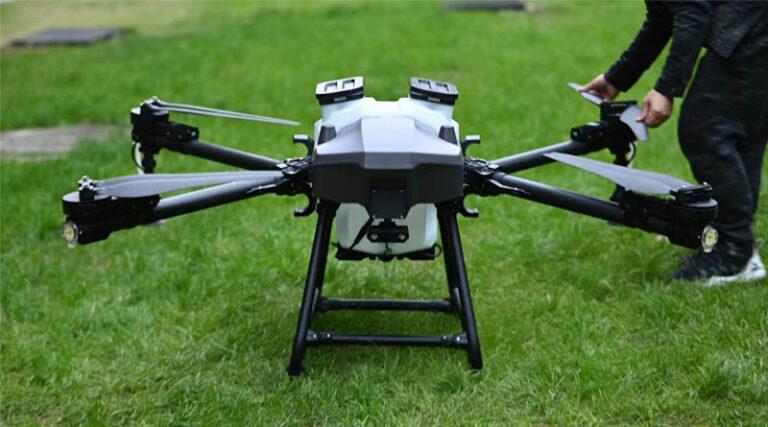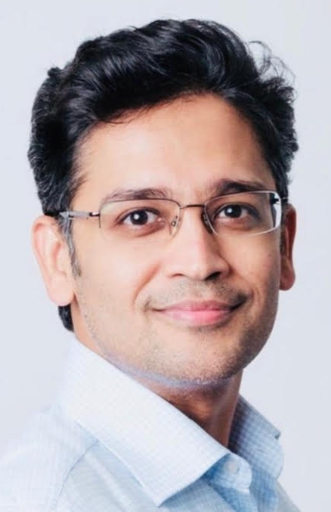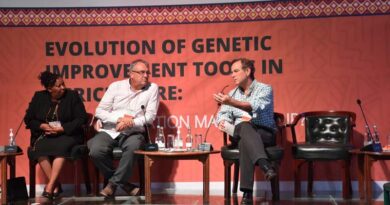
AI, Soil Analytics, Drones to make farming smarter in Asia: Amit Gupta, CEO – Agrifields
25 August 2025, New Delhi: Artificial Intelligence, soil analytics, and drones are making farming smarter in Asia, helping tackle shrinking land and erratic weather by guiding farmers on when to plant, protect, and nourish their crops more effectively.

In this exclusive conversation with Global Agriculture, Amit Gupta, Co-Founder and CEO of Agrifields, shares his insights on improving fertilizer use efficiency, the balancing of high-tech solutions with grassroots realities, the transformative role of AI, soil analytics, drone-based tools and community building in the Asian agricultural landscape.
He also reflects on the barriers to sustainable practice adoption and illustrates how companies can rethink rural engagement by building trust-based relationships with farming communities.
Excerpts from the interview:
Global Agriculture: What are the key challenges you see in fertilizer use efficiency in countries like India, and how is innovation helping address them?
Amit Gupta: One of the key challenges in improving fertilizer use efficiency in countries like India lies in the diversity of soil types, cropping patterns and the limited awareness among farmers about optimal nutrient application. Often, blanket recommendations or overuse of fertilizers lead to nutrient imbalances, soil degradation and diminishing returns over time. Smallholder farmers, who form the backbone of Indian agriculture, frequently lack access to soil testing facilities or customized solutions, resulting in inefficient and unsustainable practices.
Innovation is playing a crucial role in overcoming these barriers. Precision agriculture tools including affordable soil testing kits, satellite-based nutrient mapping and mobile-based advisory platforms are helping farmers make informed decisions.
Additionally, the development of ‘prescription fertilizers,’ tailored to the specific needs of different crops and regions, is significantly improving efficiency and reducing waste. These solutions, coupled with farmer education programs and digital literacy initiatives, are fostering a gradual shift toward more sustainable and productive fertilizer use. By aligning scientific innovation with on-ground realities, the sector is making strides toward not just better yields, but healthier soils and a more secure food future.
Global Agriculture : How do you balance technological interventions with ground-level realities of smallholder farmers?
Amit Gupta: Balancing technological innovation with the ground-level realities of smallholder farmers requires a deep understanding of their daily challenges, resource constraints and cultural contexts. While advanced agri-tech solutions hold immense promise, their success depends on accessibility, simplicity and tangible value. Many smallholder farmers may lack digital literacy or stable internet access, so tools must be user-friendly, available in local languages and compatible with basic devices.
The key is to co-create solutions through pilot programs, field demonstrations and community engagement, ensuring technologies are not only relevant but also trusted. Equally important is integrating traditional farming wisdom with modern practices, building farmer confidence rather than replacing their methods overnight. Affordable pricing models, such as pay-per-use or cooperative ownership, further bridge the adoption gap. Ultimately, empathy-led innovation guided by farmer feedback and inclusive design ensures that technology empowers rather than alienates, creating sustainable impact at the grassroots level.
Global Agriculture: What role do you see for AI, soil analytics, or drone-based tools in the near-term future of agriculture in Asia?
Amit Gupta: AI, soil analytics and drone-based tools are poised to play a transformative role in the near-term future of agriculture in Asia, particularly as the region grapples with shrinking arable land, erratic weather patterns and the need to feed a growing population. Artificial Intelligence can help farmers make data-driven decisions whether it’s predicting weather, optimizing crop cycles, or managing pests by analysing vast amounts of information with precision and speed.
Soil analytics offer another layer of intelligence by identifying nutrient deficiencies, soil health trends and recommending targeted fertilization. This not only boosts yield but also prevents overuse of inputs, protecting long-term soil health. Drones, on the other hand, enable real-time crop monitoring, precise spraying of fertilizers or pesticides and early detection of crop stress.
Together, these technologies democratize precision agriculture, making it accessible even to small and mid-sized farms through shared services or government-led initiatives. The result is higher productivity, lower costs and a more sustainable agri-ecosystem.
Global Agriculture: From your experience, what are the biggest barriers to sustainable practices being adopted at scale by farmers?
Amit Gupta: One of the biggest barriers to the large-scale adoption of sustainable farming practices is the perceived risk and uncertainty involved. Many farmers rely on traditional methods that have sustained their livelihoods for generations. Shifting to new practices, even if more sustainable, often requires upfront investment, learning new techniques and the courage to experiment in an environment where even a single failed season can have serious consequences.
Another challenge is the lack of access to reliable information and resources. Many farmers are not aware of sustainable alternatives or they lack technical guidance, financing options or market linkages that reward sustainable produce. Furthermore, fragmented supply chains, inconsistent policy support and limited infrastructure such as storage and logistics can make it difficult to sustain new models over time.
Finally, behavioural change takes time. Unless farmers clearly see economic and long-term value and feel supported by local ecosystems and government programmes, adoption at scale remains difficult.
Global Agriculture: How should companies and institutions rethink their approach to rural engagement and farmer trust-building?
Amit Gupta: Companies and institutions must move beyond transactional relationships and adopt a partnership-driven model when engaging with rural communities. Trust-building in farming ecosystems begins with listening understanding farmers’ needs, challenges, aspirations and local context before offering solutions. Rural engagement should not be limited to product delivery instead it should be about co-creating value.
Transparency is key. Clear communication on product usage, pricing, results and risks builds credibility.
Long-term trust also grows when companies invest in knowledge-sharing such as training sessions, digital literacy programmes and platforms for farmers to ask questions or share feedback. Collaborating with local institutions, agri-universities, NGOs and farmer producer organizations (FPOs) can enhance outreach and legitimacy. Ultimately, rural engagement must prioritize empathy, continuity and shared success over short-term sales targets.
Also Read: Delhi Corteva Introduces Bexavie® Insecticide in India for Fall Armyworm Management in Corn
📢 If You’re in Agriculture, Make Sure the Right People Hear Your Story.
From product launches to strategic announcements, Global Agriculture offers unmatched visibility across international agri-business markets. Connect with us at pr@global-agriculture.com to explore editorial and advertising opportunities that reach the right audience, worldwide.






